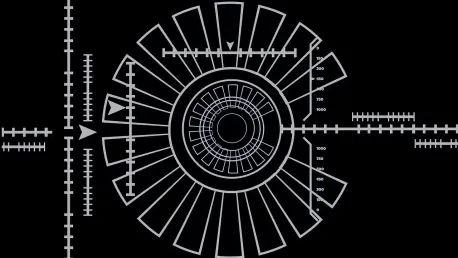Trust Stamp has embarked on an ambitious project named the Biometric Secure Module (BSM) to enhance biometric security through integrating palm and face biometrics into a cryptographic solution. Such initiatives become crucial as cyber-crime threats loom larger, with global costs predicted to reach $10.5 trillion by 2025. This project builds on Trust Stamp’s innovative Stable IT2 biometric cryptosystem, offering an advanced method to secure sensitive biometric data without storing it directly on devices. The BSM project aims to develop a high-entropy, secure authentication method that ensures user data protection by eliminating the need to store sensitive biometric information. Even if a device is breached, the cryptographic keys remain secure because they are not stored directly on the device. This represents a significant advancement in biometric security, addressing the rising vulnerability of biometric systems to cyber threats.
Trust Stamp’s Commitment to Advanced Biometric Security
The BSM project emphasizes Trust Stamp’s dedication to pushing the boundaries of biometric security. Traditionally, biometric systems have faced challenges regarding the secure storage and management of sensitive data. Trust Stamp seeks to alleviate these concerns through its proprietary Stable IT2 algorithm, which generates cryptographic keys directly from biometric features, particularly facial and palm biometrics. This method not only maintains high security levels but also minimizes the risks associated with storing sensitive data on devices.
Trust Stamp’s innovative approach of using palm biometrics—a feature less publicly exposed than facial features—adds an extra layer of security to the system, aligning well with industry standards and recommendations. By incorporating palm biometrics, Trust Stamp reduces the likelihood of unauthorized access, given that palms are less frequently exposed in the public domain compared to facial features. This alignment with recognized standards such as those from the FIDO Alliance enhances the credibility and reliability of Trust Stamp’s biometric solutions. The focus on user privacy and security underscores Trust Stamp’s commitment to setting new benchmarks in the biometrics field.
Enhancing Privacy and Security through Palm Biometrics
Professor Norman Poh, Trust Stamp’s Chief Science Officer, emphasizes the enhanced privacy the BSM project offers by relying on palm biometrics. Unlike facial recognition, which is commonly used and can be captured from a distance, palm biometrics significantly reduce the risk of unauthorized access due to their minimal public exposure. This thoughtful approach ensures that even less exposed biometric modalities can contribute to high-security standards, thereby protecting user data more effectively.
In addition to promoting privacy, Prof. Reuben Farrugia, the Research Director at Trust Stamp, highlights the project’s technical ambitions. One of the critical goals is developing a software development kit (SDK) for Android devices. This SDK will integrate the Stable IT2 process into mobile applications, enabling secure on-device authentication. Moreover, the project includes the development of an Orchestration Layer to provide seamless access to helper data, thereby simplifying the biometric authentication process for end-users. These advancements signify Trust Stamp’s forward-thinking approach to creating practical and highly secure applications.
Project Timeline and Financial Backing
The BSM project is scheduled to run for 18 months, starting on November 1, 2024. This lengthy timeline reflects the comprehensive nature of the research and development involved in creating such a sophisticated biometric system. Financially, the project is significantly backed by Xjenza Malta through the FUSION: R&I Technology Development Programme Lite, which covers 75% of the project costs. Trust Stamp will contribute the remaining 25%, demonstrating its financial and intellectual dedication to advancing biometric security.
The collaboration with Xjenza Malta underscores the innovative nature of the BSM project. Public-private partnerships often play a crucial role in driving technological advancements and addressing cybersecurity challenges, and this project is a prime example of such collaboration. By pooling resources and expertise, Trust Stamp and Xjenza Malta aim to develop a cutting-edge solution that addresses the pressing need for enhanced security in the digital age. This commitment not only highlights the importance of the project but also reflects the broader trend of collaborative efforts in tackling cybersecurity threats.
Addressing the Growing Cyber-Crime Threat
The consensus among cybersecurity experts points to the growing necessity for enhanced digital security measures, especially in the biometrics field. Integrating face and palm recognition technologies is considered a robust method to bolster system resilience and user privacy. The BSM project aligns with broader trends in digital security, emphasizing the need for high-entropy cryptographic solutions without relying on storing sensitive data on individual devices. By focusing on minimally exposed biometric modalities like palm prints, Trust Stamp ensures a higher degree of security and privacy for users.
This initiative not only aligns with industry standards but also represents a proactive step towards more secure and user-friendly biometric authentication solutions. The BSM project exemplifies Trust Stamp’s innovative approach to solving contemporary security challenges, reinforcing the need for advanced measures in mitigating cyber-crime threats. With the number of cyber threats escalating, Trust Stamp’s focus on integrating less publicly exposed biometric data such as palm recognition into cryptographic systems marks a significant advance towards protecting user identities and sensitive information.
Practical Implications and Future Prospects
One of the core innovations of the BSM project is the development of an Android software development kit (SDK), facilitating broader adoption and integration of the technology into mobile applications. This practical application is vital, especially for sectors like financial services, digital wallets, and identity access management, where secure authentication is paramount. The Android SDK will allow developers to incorporate Trust Stamp’s secure biometric authentication methods into their applications, increasing the reach and impact of this technology.
The project’s outcomes could redefine digital identity security standards, setting a new benchmark for future technology developments. Trust Stamp’s innovative approach promises to make significant strides in creating more reliable and secure biometric authentication systems, which are essential in the current digital landscape. By enhancing both security and usability, the BSM project aims to offer a solution that addresses the dual needs of protecting sensitive information and providing a seamless user experience. These advancements highlight Trust Stamp’s role as a pioneer in the biometrics field, paving the way for future innovations in digital security.
Conclusion
Professor Norman Poh, Trust Stamp’s Chief Science Officer, underscores the privacy benefits of the BSM project by utilizing palm biometrics. Unlike facial recognition, which can be easily captured from afar, palm biometrics have minimal public exposure, substantially lowering the risk of unauthorized access. This strategic choice ensures that even lesser-known biometric methods meet high-security standards, providing robust protection for user data.
Moreover, Professor Reuben Farrugia, the Research Director at Trust Stamp, discusses the project’s technical objectives. A primary aim is to develop a software development kit (SDK) for Android devices, integrating the Stable IT2 process for secure, on-device authentication. This SDK will enable mobile applications to authenticate users safely. Additionally, the project plans to include the creation of an Orchestration Layer, making it easier for users to access helper data, thus streamlining biometric authentication. These innovations reflect Trust Stamp’s commitment to developing practical, secure solutions that enhance user experience and data protection.









